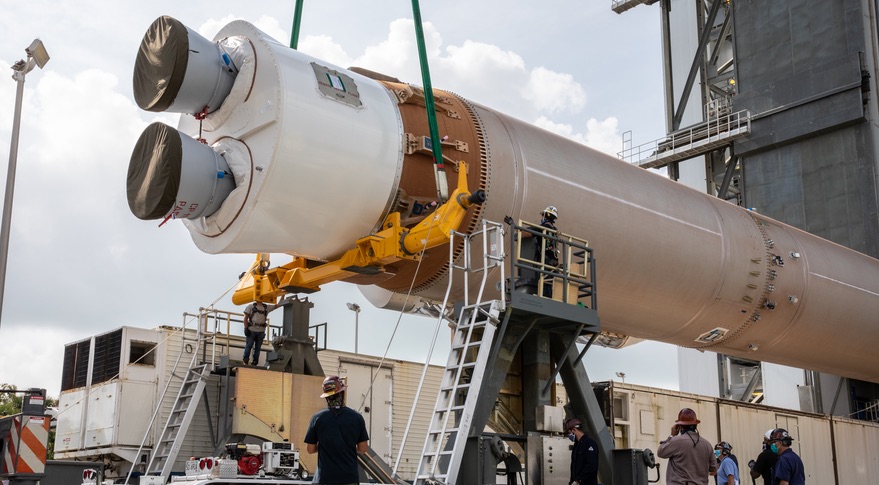WASHINGTON — A launch vehicle processing “hiccup” has pushed back next month’s launch of NASA’s Mars 2020 rover mission by three days.
NASA Associate Administrator Steve Jurczyk revealed the delay in a presentation to a joint meeting of the National Academies’ Aeronautics and Space Engineering Board and Space Studies Board (SSB) June 9. “We had a little bit of a hiccup with ULA and the launch vehicle processing, so we’re incurring a three-day delay,” he said.
He didn’t elaborate on the issue that caused the delay, but a spokesperson for United Launch Alliance, which is providing the Atlas 5 used to launch Mars 2020, told SpaceNews June 10 that “additional time was needed for the team to repair an issue with the ground system equipment.”
Tory Bruno, ULA president and chief executive, said on Twitter that a problem with a crane used as part of launch vehicle processing caused the delay, an issue that has since been corrected.
The delay pushed back the launch of Mars 2020 to July 20, with a two-hour window opening at 9:15 a.m. Eastern, from Cape Canaveral, Florida.
Before the launch vehicle processing problem, Mars 2020 had remained set to launch July 17, the first day of the overall launch window for the mission. That launch window extends to Aug. 11.
If Mars 2020 doesn’t launch by Aug. 11, the mission will have to wait until the next launch opportunity more than two years later. That’s the main reason that NASA elevated the mission to one of its highest priorities during the coronavirus pandemic, alongside the SpaceX Demo-2 commercial crew mission.
NASA went to significant lengths to keep Mars 2020 on schedule, including using agency aircraft to ferry personnel and equipment to the Kennedy Space Center, where the spacecraft is wrapping up pre-launch preparations, to avoid any risks of coronavirus exposure from commercial flights.
Mars 2020, whose rover was named Perseverance earlier this year, is the first step in a multi-mission effort to return samples from Mars to Earth. Perseverance will collect those samples, which will be picked up by a rover launched on a second mission. That second rover will place the samples into a small rocket called a Mars Ascent Vehicle, which will lift off from the planet and place the sample container in orbit. A third mission, an orbiter, will collect the samples and return them to Earth as soon as 2031.
Mars 2020 is closely modeled on the Mars Science Laboratory mission and its Curiosity rover that landed on Mars in 2012. “We land in a similar fashion to Curiosity,” said Adam Steltzner, Mars 2020 project chief engineer, at a June 10 SSB meeting. “We’ve added some tricks to our landing system to make the performance even better,” allowing a more precise targeting of the rover’s landing site.
Thomas Zurbuchen, NASA associate administrator for science, told the SSB at its June 10 meeting that he was not concerned about this three-day slip. “We have a long window ahead of us. We always start by targeting the first day of the window,” he said. “It’s rocket science, remember.”
